
Japanese Garden Tools Vs. American: What’s the Difference?
You may have seen Japanese gardening tools popping up more in stores and online. Sure, they&rs… Read More
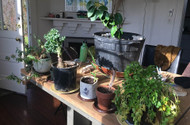
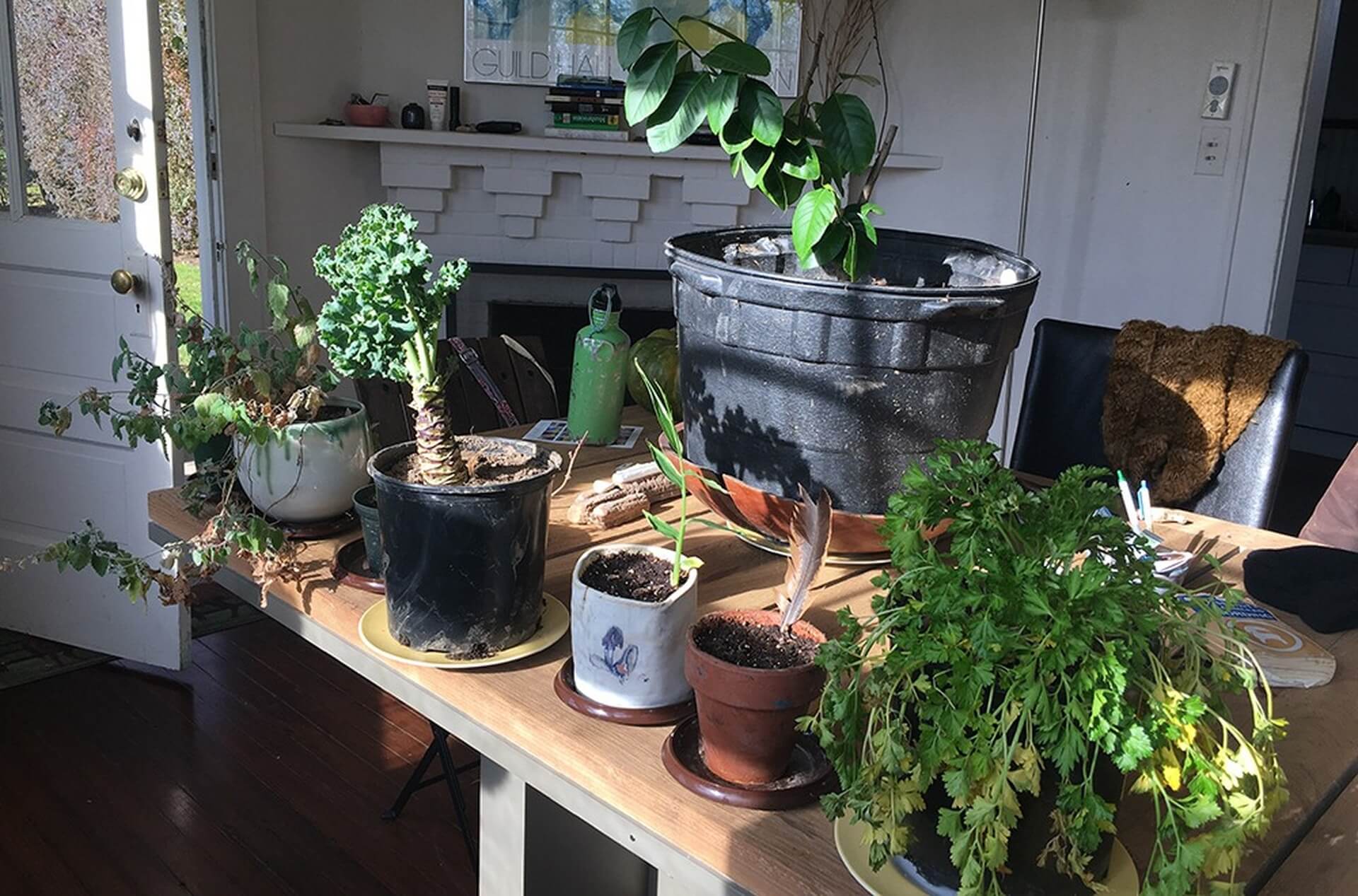
Even when there is snow outside your window, it is possible to foster nature’s greenery indoors. Plants can be a source of inspiration and positive feedback not only outside but also inside your home. Not to mention, they can nourish you! With the proper treatment and technique via container gardening, many plants can sustain inside during the cold winter months, adding life and nourishment to any living or working space. You may ask, why would I want another responsibility? Well, scientific studies (and personal experience), suggest that having an indoor plant can increase your happiness and connection to your home.
As an experienced farmer and gardener, I grow most of my food outdoors. The plants I keep in my home in the winter months are either plants that are not frost-hardy or tropical species. One of my most beloved plants is a three-year-old Eureka lemon tree which I take outside during the warm summer months, but bring inside once it drops below 50-degrees at night. This tree was given to me by a thoughtful friend who knows I love lemons. Citrus trees are not only gorgeous, but productive. Not to mention their blossoms are highly fragrant. For some people, the right tree may be an orange, grapefruit, lime, fig, or banana. Make it personal to you.
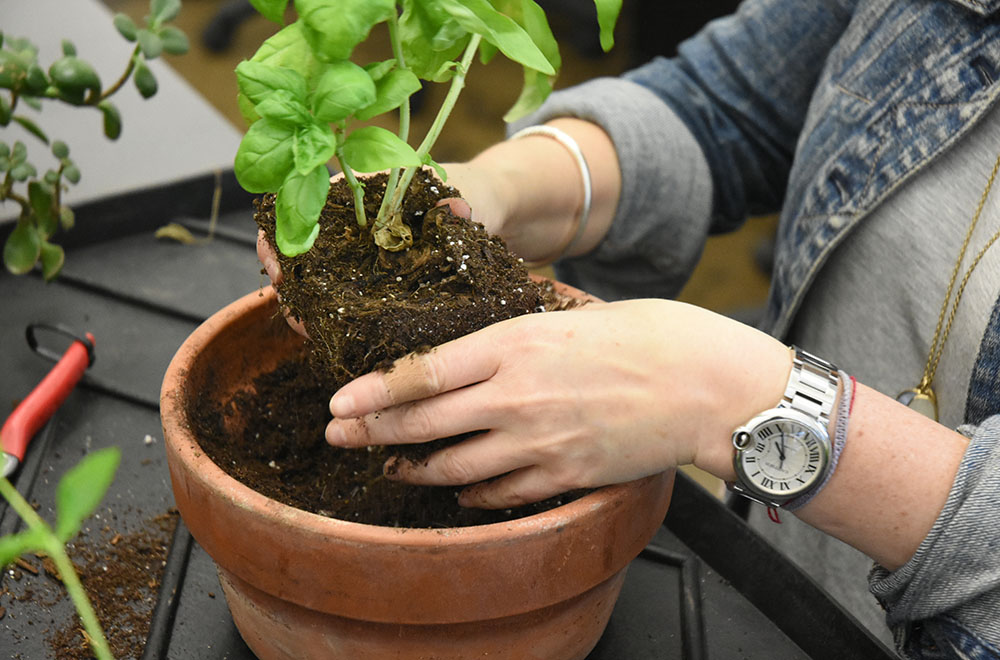
(Photo: Transplanting basil to an indoor pot for the winter.)
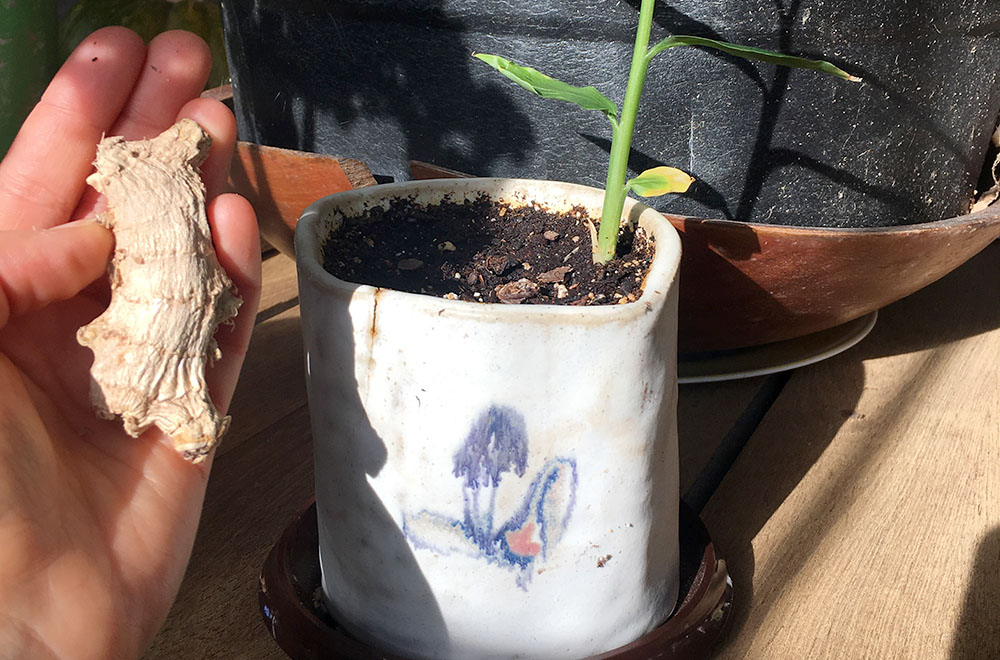
(Photo: Ginger grows well inside, and has many homeopathic and culinary uses.)
When growing plants indoors I like to consider their practicality too. Herbs are great to grow in containers indoors. Not only do you save on grocery money, but as an added bonus, you might also lessen your carbon footprint by lowering your use of plastic bags. Consider adopting a rosemary, basil, or cilantro plant for your kitchen windowsill, ready for your next spaghetti sauce. I also recommend herbs because of their aromatherapy value. Even a small whiff of lavender or thyme as you pass by your plants will guarantee a moment of peace.
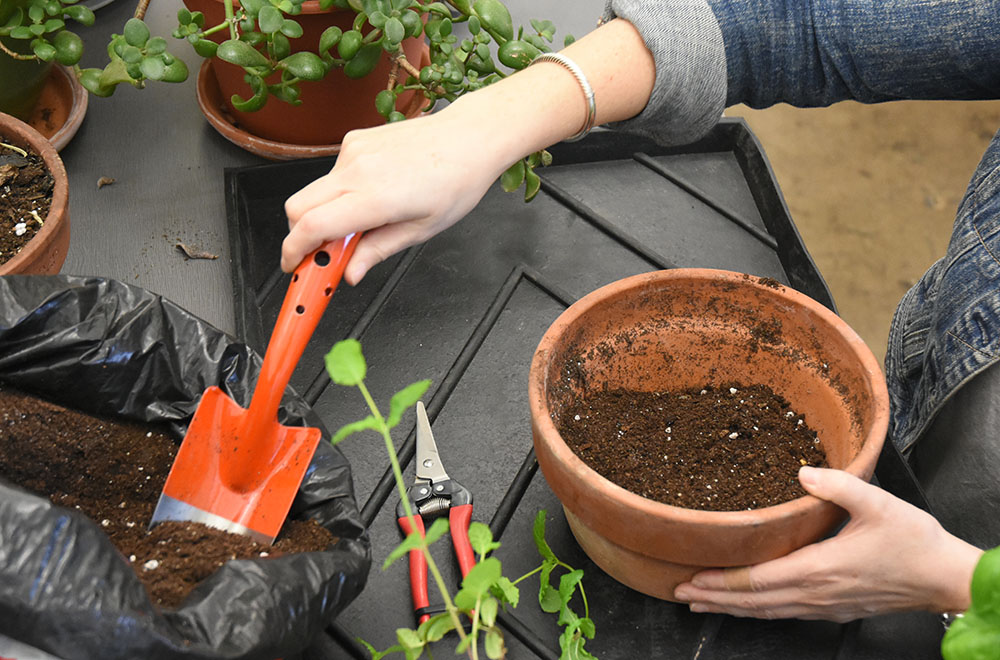
When indoors, keep your potted plants in grow trays, to contain the water that spills over or seeps out of the holes in pots. Keep a bag of potting soil and a sturdy trowel on hand.
Another fun thing to do with indoor horticulture is growing plants from your compost. If you’ve eaten a mango or avocado recently, you’ve most likely thrown away the seed that was nestled inside the fruit. Instead of tossing these pits, you can propagate them into a plant for your household. I recently planted ginger, which had begun to sprout on my countertop. I put it in soil in a ceramic pot on my dining room table and was skeptical that it was going to grow. After two patient weeks, a green shoot emerged from the soil. This luscious, leafy top will be lovely to have inside to share the heat and purify the air.
Sprouts are another type of plant you can grow indoors year-round. All you need is your choice seeds, a jar, and a top that you can punch holes in. This process requires much attention since the quality of the sprouts are enhanced when regularly drained and watered. I love to sprout alfalfa and broccoli for their mellow flavor while a radish sprout adds a little spice to salads or sandwiches. Fenugreek seed, an annual plant commonly used in cuisines of South and Central Asia, is also amazing for its faint maple flavor. Most sprouts are a nutritional addition to any meal, adding fiber, iron, and even protein.
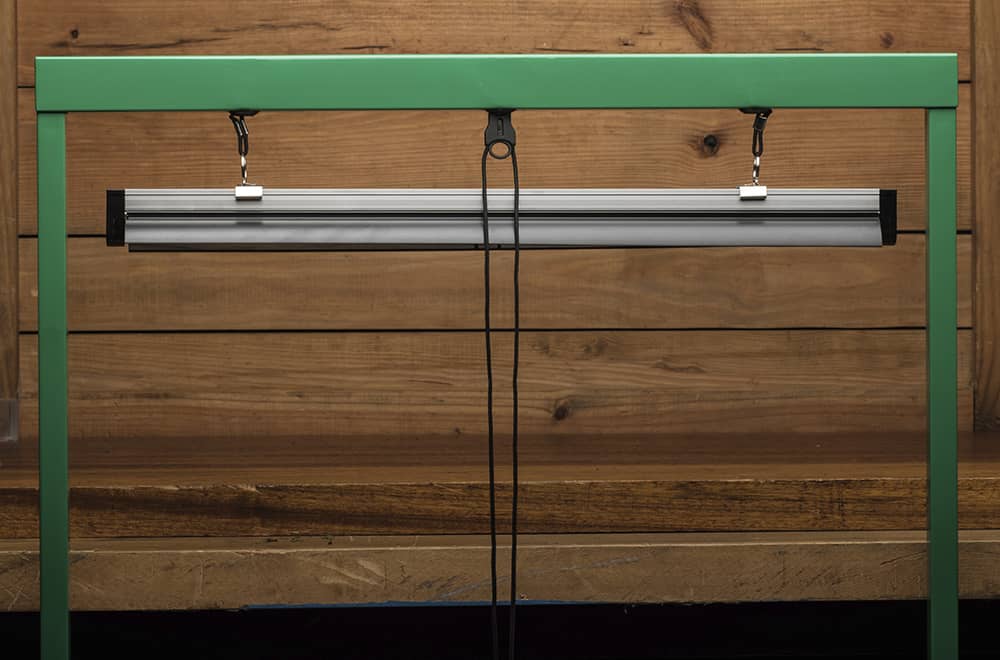 Some grow lights have an adjustable light bar, so that as your plants grow, the bar can be raised, thereby altering the intensity of the light on the plants.
Some grow lights have an adjustable light bar, so that as your plants grow, the bar can be raised, thereby altering the intensity of the light on the plants.
With all these different plants, it is important to understand their separate needs. But generally, plants growing in pots dry out quickly, especially if your home is heated by dry heat from radiators. Maintain a regular watering schedule and keep a close eye on your soil, which should stay moist. Even though some plants like less water, I don’t recommend pouring a tablespoon a day. Instead chose one day a week to soak the dirt and roots fully. I’ve lost a lot of plants by watering too little as well as too much. It is a balance and the best way to achieve it is to get to know your plants: read about their specific needs, observe them, and even talk to them. I promise, diligence works.
If you have trauma from too many plant deaths, I recommend sticking to the low maintenance plants that need little water. Aloe vera is an amazing example which is also handy to have in your home for its medicinal properties. Not only can you put aloe in your smoothie for digestive health, but you can also use it as a salve on burns, cuts, or itchy rashes. Of course, there are cacti, succulents, and the snake plant, a.k.a. Viper’s Bowstring. All these are fairly sturdy as long as they are kept warm, receive adequate light and are not overwatered.
And finally, observe the sunlight patterns in your home year-round. You can even keep a journal to document which rooms get the most sunlight, during which months. If your home doesn’t get a lot of natural sunlight, grow lights are available for avid indoor gardeners. You can even use grow lights in homes with lots of windows, because during the winter, especially in northern latitudes, sunlight hours are far shorter and the light less intense.
Garrett Wade sells many great products to assist in your indoor gardening. Featured here in this post are: